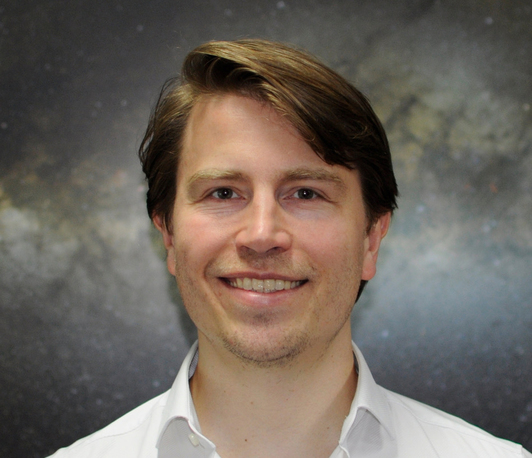Putting cosmology to the test with a 1% measurement of the Hubble constant based on pulsating stars
Institutskolloquium
- Datum: 05.07.2024
- Uhrzeit: 10:30 - 12:00
- Vortragender: Prof. Dr. Richard Anderson
- Richard Anderson is head of the Stellar Standard Candles and Distances research group at EPFL’s Institute of Physics. He received his PhD in Astronomy and Astrophysics from the University of Geneva. Prior to his current position at EPFL, he worked at the Johns Hopkins University in Baltimore, MD, USA from 2014 to 2017, funded by an SNSF Early Postdoc Mobility Fellowship. From 2017 to 2020, he was an independent Research Fellow at the European Southern Observatory (ESO) in Garching b. München, Germany.
- Ort: IPP Garching
- Raum: Arnulf-Schlüter Lecture Hall in Building D2 and Zoom
- Gastgeber: IPP
- Kontakt: karl.krieger@ipp.mpg.de

The present-day expansion rate of the Universe, or Hubble constant (H0), is a fundamental parameter of cosmology. H0 sets the age of the Universe, its critical density, and sets the absolute scale for a wide array of cosmological observables that probe the laws of physics on extremely large scales and across time. However, the last decade has brought about an increasing disagreement between the values of H0 measured directly in today's Universe and the values of H0 determined indirectly from observations of the very early Universe. This 5-6 sigma disagreement has come to be known by the term "Hubble constant tension" and has become one of the most pressing issues to resolve in observational cosmology, with potential implications ranging from measurement systematics to altering the particle physics sector or even general relativity. Following a brief summary of the current situation in the "tension", I will first describe the observational setup that achieves the most accurate direct H0 measurement using an extragalactic distance ladder in which pulsating stars anchor type-Ia supernovae to geometrically measured distances. In turn, I will present the key developments that have more than halved the uncertainty on H0 over the last 8 years. Further major improvements towards a direct 1% measurement of H0 are coming within reach thanks to state-of-the-art observational facilities, such as the James Webb Space Telescope, the ELT, and future data releases of the ESA Gaia mission. With further improved systematics and accuracy, the distance ladder will put precision cosmology to the test, with potentially far-reaching consequences.